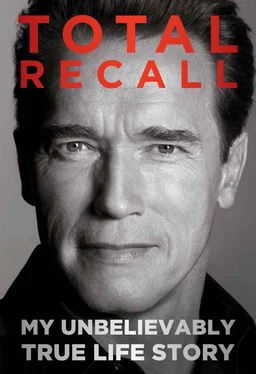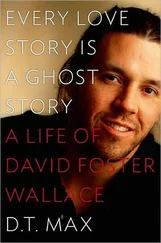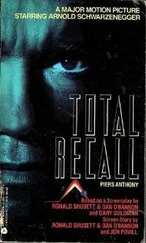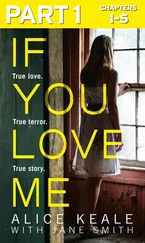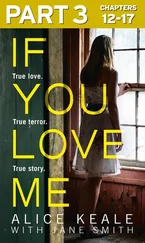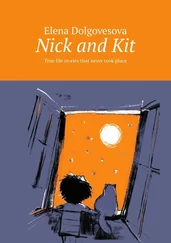“Where are you wearing it?” he asked.
“First of all, a month from now, I’m going to the Cannes Film Festival.”
“Well, that’s a beige linen suit. There is no debate about that.”
So Morty made me a light beige linen suit and picked the tie and the shirt so that I would look really snappy.
Without question, the clothes were important when I got to Cannes. Decked out in the suit I was so proud of, with the right shirt, the right tie, the right shoes, I circulated among the thousands of journalists there and drummed up a lot of press for Pumping Iron . But the biggest splash I made there was on the beach, where George had the idea of staging a photo op featuring a dozen girls from Crazy Horse, the Parisian strip club and cabaret. They were outfitted in frilly summer dresses, bonnets, and bouquets—and I was just in my posing trunks. Pictures of that scene appeared in newspapers around the world, and the Pumping Iron screening was packed to overflowing.
So many famous stars were at Cannes—like Mick and Bianca Jagger!—and I was part of it. I kicked around a ball with the great Brazilian soccer star Pelé. I went scuba diving with French military frogmen. I met Charles Bronson for the first time. The woman who headed European distribution for his movies hosted an evening for him at the hotel on the beach. She sat next to him at the head table, and I was close enough to hear their conversation. It turned out that Bronson wasn’t an easy guy to talk to. “You’re contributing so much to our success,” she said to him. “We’re so lucky to have you here. Isn’t the weather wonderful? We’re so lucky to have sunshine every day.” He waited a beat or two and then answered, “I hate small talk.” She was so shocked that she turned to her other dinner partner. I was stunned. That’s the way he was, though: rough around the edges. It never seemed to hurt his movies, but I decided I’d stay with a friendlier style.
Now that I was interested in clothes, my agent Larry Kubik was happy to take me shopping after I got back to LA. “You can find those same pants in this other store that’s not on Rodeo Drive for fifty percent less,” he’d say. Or, “Your brown socks won’t go with that shirt. I think you should have blue socks.” He had a good eye, and for both of us, shopping was a welcome diversion from turning down terrible parts. The most recent offers were for me to play a muscleman in Sextette , starring eighty-five-year-old Mae West, and, for $200,000, to be in commercials about automobile tires.
For months it seemed like the only action for me in LA was in real estate. Partly because of inflation and partly because of growth, Santa Monica property values were going through the roof. My apartment building wasn’t even on the market, but around the time that Pumping Iron came out, a buyer offered me almost double what I’d paid for it in 1974. The profit on my $37,000 investment was $150,000—I’d quadrupled my money in three years. I rolled the whole amount into a building twice the size, with twelve apartments rather than six, with the help of my friend Olga, who, as always, had found just the place to buy.
My secretary, Ronda Columb, who had been running the Arnold mail-order business and organizing my crazy schedule for years, was tickled to see me turning into a real estate minimogul. She was a transplanted New Yorker, four times divorced and ten or twelve years older than me. Her first husband had been a bodybuilding champ in the 1950s. I’d met her through Gold’s Gym. Ronda was like an older sister. Her latest boyfriend was a real estate developer named Al Ehringer.
Out of the blue one day she said, “You know, Al loves you.”
“He gets to go home with my secretary; of course he loves me!” I said.
That got a laugh. “No, really, he loves you and wants to be in business with you. Would you think about doing business with him?”
“Well, find out what he has in mind, because there’s a building for sale down on Main Street, and if he wants to get involved …” Al had a reputation as a shrewd real estate brain, very good at sensing which areas to develop. He’d played a major role in reviving the historic district of Pasadena, California, with shops and lofts. I thought Santa Monica might be ripe for the same treatment. Main Street, which ran parallel to the ocean a few blocks in from the beach, was run down and full of drunks and drifters, and there was a lot of property for sale. I was looking to invest $70,000 I’d saved up from Pumping Iron and other work.
Al was already familiar with the building that had caught my eye. “That property and three others are for sale now,” he said. “Pick which one you like, and I’ll go in with you.” So Al and I bought the building and started organizing the turnaround of Main Street.
Our building started to pay for itself almost immediately. It came with three small houses out back, facing onto the next street, and we sold those off for enough money to reimburse our entire down payment. That made it easy to get a big loan and do a total renovation. And because the building was more than fifty years old, it qualified for historic status and a big tax advantage. This was yet another reason to love America: back in Austria, if you tried to get a building declared historic, they’d laugh at you unless it was five hundred years old.
Making money this way doubled my confidence. I adjusted my life plan: I still wanted to own a gymnasium chain eventually, but instead of making money from movies, like Reg Park and Steve Reeves did, I would make it from real estate.
_
Ronda always put public appearance requests in a pile for me to consider. The one that grabbed my attention that spring was an invitation from the Special Olympics signed by “Jacquie Kennedy.” It asked if I would fly to the University of Wisconsin to help with research on whether or not weight training made sense for mentally handicapped kids.
If I’d stopped to think, I would have realized that this wasn’t the Jackie Kennedy whom I’d met—that woman’s last name was now Onassis, she didn’t spell her name Jacquie , and she lived in New York. But I thought that maybe she was the honorary chair or something. So I said impulsively to Ronda, “I’ll accept.” I was already doing seminars on weight training and on how to be a winner, and I thought that consulting at a university would be a nice credential that would elevate bodybuilding as a sport, even though they weren’t offering to pay. I wasn’t sure if weight training could help intellectually challenged kids, but it fascinated me that they wanted to try, and for me this would open up a whole new world.
There was still snow on the ground in April when I arrived: this was the university’s northern branch, way up in Superior, Wisconsin, near Duluth. The two women who picked me up were both research scientists with PhDs. They introduced me to Jacquie, a slim, lively person from the Special Olympics, and showed me to the weight room in the gymnasium where the kids would be the next morning.
“What exercises can we have them do?” Jacquie asked.
“I don’t know how handicapped those kids are,” I said, “but a safe thing to do is bench press. Another safe thing is dead lift, another safe thing is the curls, another safe thing is …”
“Okay,” Jacquie said. “The first day, let’s just keep it at that.”
So we set up the equipment and the camera, checking to make sure there would be enough light to film, and made a plan for the next day. That night I lay in bed wondering how I would deal with the kids. Rather than worry, I decided just to improvise.
There were about ten boys in their early teens, and the minute I walked in the room, it was clear what to do. They milled around me and wanted to touch my muscles, and when I flexed for them, they exclaimed, “Wow! Wow!” I realized that they were putty in my hands. Authority for them was much more visual than intellectual—they would listen to me not because I’d studied physical therapy or anything like that but because of the biceps.
Читать дальше
